Expert’s Rating
Pros
- Stylish and comfortable
- Good user experience
- Solid core tracking
- Excellent charging case
Cons
- Erratic stress tracking
- Expensive
- Doesn’t feel like metal
Our Verdict
The Galaxy Ring is a great first effort from Samsung. If you’re in the market for a smart ring and can stomach the price, it’s one of the best you can get right now. However, there are a few niggles to be aware of.
Samsung’s first smart ring is here and will no doubt introduce the category to the mainstream.
The big questions include ‘what does a smart ring do?’ and is ‘Samsung’s better than rivals?’, with the Oura Ring Gen 3, RingConn Smart Ring and Ultrahuman Ring Air all credible alternatives.
There’s lots to unpack, so I’ve spent a couple of weeks with the Galaxy Ring on my finger to see how it performs.
Design & Build
- Three colours
- Nine sizes
- Titanium and waterproof
The Galaxy Ring is one of the best-looking smart rings on the market if you ask me.
It’s got a concave shape on the outer side, but is mostly flat on the inside, apart from three bumps where sensors are housed.
The design helps avoid scratches, as does the fact the Galaxy Ring is made from Grade 5 titanium. My sample still looks brand new after almost two weeks of wear – which can’t be said for all rivals – and looks like it will hold up well going forward.
I’ve got the Titanium Silver colourway, which has a nice matt finish, but you can also get it in Titanium Black and Titanium Gold if you prefer.
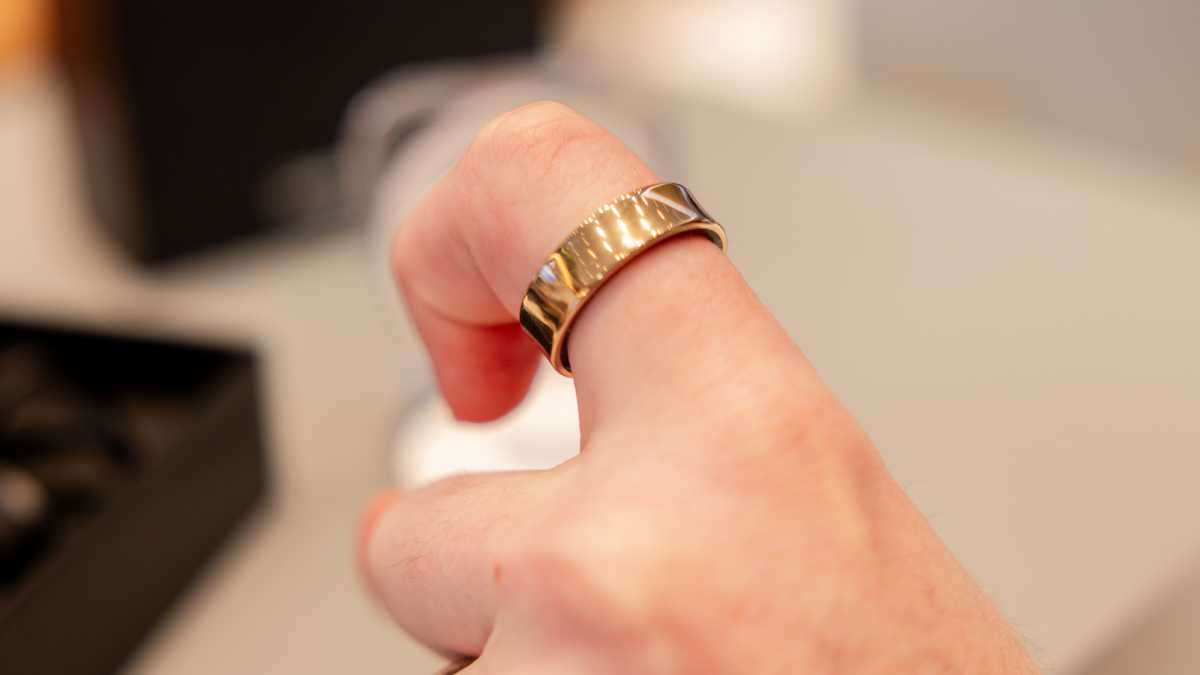
Dominik Tomaszewski / Foundry
On the downside, the Galaxy Ring doesn’t feel as premium as I expected, considering the choice of material. My first wedding band was titanium, and this feels nothing like it – I would have guessed it was plastic.
This is partly due to how it feels to touch, but also the weight of the ring (2.3-3g, depending on the size you get). It’s a race to the bottom, which I don’t understand when chunky, heavy jewellery is the norm and people wear it 24/7 with no problems.
If it was heavier, it would feel more luxurious and expensive. I find it very comfortable but don’t think I would find it any less so if it was twice the weight.
The Galaxy Ring is one of the best-looking smart rings on the market if you ask me
One of the tricky things with smart rings is choosing a size. It needs to fit properly, so you’ll need a sizing kit (or visit a Samsung store if you can) as guessing won’t suffice.
You can get one for £10 in the UK and Samsung will then take that off your order should you go on to buy a Galaxy Ring. In the US, it’s available for free.
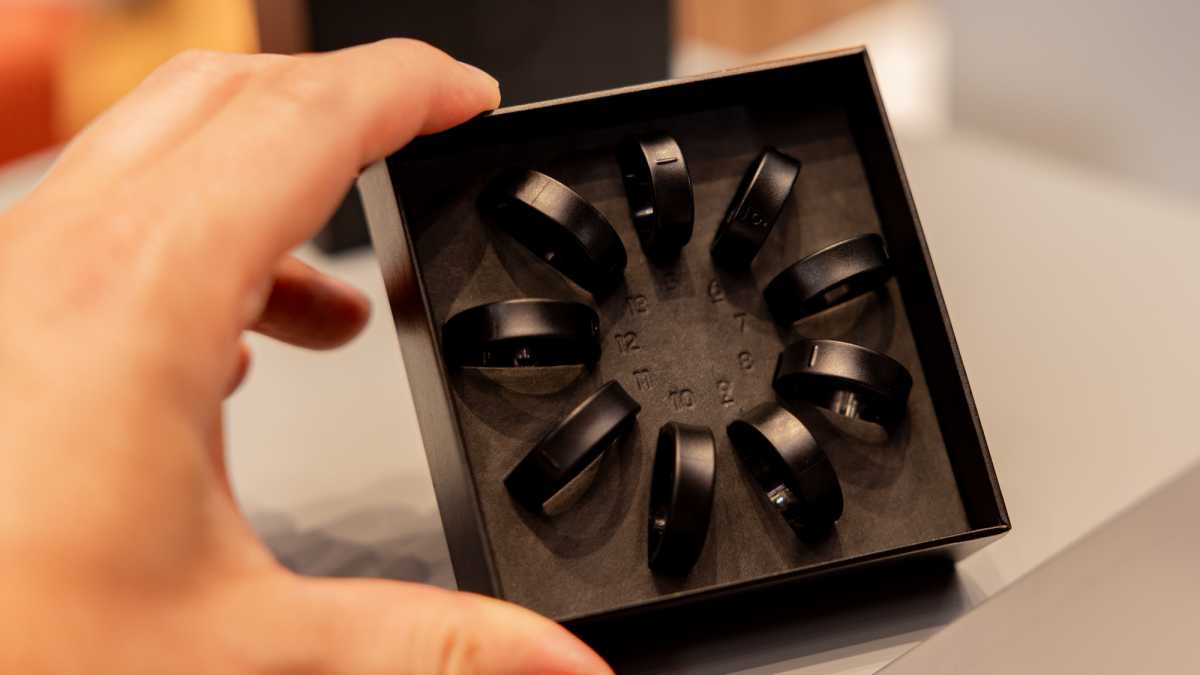
Dominik Tomaszewski / Foundry
There are nine sizes to choose from (5-13 US sizing) with no price difference. Those with larger fingers get a bigger battery, so you might want to factor this into your decision of which finger to put it on.
I went for my index finger, mainly to avoid it clashing with my wedding ring (it’s not advised that you wear a smart ring on your dominant hand).
To round out this section, the Galaxy Ring is IP68 and 10ATM rated meaning it’s fully dust resistant and water resistant enough to use while swimming.
Setup
- Not the smoothest experience
- Multiple apps required
When I review products from companies like Samsung, I expect a better and smoother user experience compared to lesser-known rivals.
Although I didn’t have the same issues as the Circular Ring Slim, which took me a week of attempts to pair, it also wasn’t perfect.
With no screen to provide instructions, I reached into the box for the quick start guide. This mainly told me to open the case with the ring inside and wait for a pop-up on my phone.

Dominik Tomaszewski / Foundry
This never came (perhaps because I wasn’t using a Samsung Galaxy phone), but there should be instructions for this scenario. Instead, I connected the ring via Bluetooth, as if they were headphones, which worked first time.
Then, I downloaded the Samsung Health app to get going, only there was no way of adding the ring. It turns out, you also need the Galaxy Wear app, with the two working in conjunction.
After a long and convoluted process, I eventually got everything set up, but it took more guesswork and fumbling than is ideal. It would be far better if Samsung consolidated these apps and made it more obvious what to do.
I eventually got everything set up, but it took more guesswork and fumbling than is ideal
Related: Samsung’s Galaxy Ring beats Oura in these 4 key ways, but loses in 1
Fitness & Tracking
- Heart rate sensor
- Skin temperature sensor
- Sleep tracking and more
On the whole, a smart ring is like a fitness tracker, just on your finger and with no screen. The Galaxy Ring has heart rate and skin temperature sensors, along with an accelerometer to track your activity.
You get all the kinds of data that you’d expect, such as how many steps you’ve taken each day, heart rate, minutes active and calories burned. There’s also sleep tracking, including blood oxygen levels while you slumber.
It’s not the most comprehensive tracking system because, after all, Samsung has limited space in the ring to pack the necessary tech. It means there’s no GPS or altimeter for counting floors climbed.

Chris Martin / Foundry
You also miss out on the kinds of things you would expect on a smartwatch of this price, such as ECG or Bioelectrical Impedance Analysis sensor for advanced metrics like body composition.
You might assume there’s an NFC chip for things like contactless payments. But like all current rivals, that’s not a feature on offer.
So, provided you’re not looking for GPS-tracked runs (without your phone) or electrocardiograms and other advanced data, you’re good to go.
I’ve found the fitness and wellbeing tracking on the Galaxy Ring to be accurate and helpful on the whole.
As well as the basics like step count, you get an ‘Energy score’, which is similar to Google/Fitbit’s ‘Readiness score’. It collates various data and factors (mainly sleep, activity and heart rate) and essentially tells you how charged up you are for activity, with some notes alongside the total score out of 100.
I’ve found the fitness and wellbeing tracking on the Galaxy Ring to be accurate and helpful on the whole
It works well and correctly identified I was quite knackered after a long and big meal out for my wedding anniversary which affected my sleep. The next day, the app suggested I prioritised rest, which I gladly accepted.
Sleep tracking is generally accurate, albeit on the generous side of things, typically suggesting I fell asleep as soon as I got into bed, which is rarely the case. While it might not be totally accurate, I’d rather be getting good sleep scores – even if it’s a placebo, they make me feel better.
I’ve ditched various other devices that can track my sleep, as they only made me feel worse when I looked at the result in the morning. And the Galaxy Ring wasn’t inaccurate enough to mean I was being told I had energy that I didn’t possess.
You can get an overview of various elements, including sleep score, or dive deeper into the various metrics. After seven days of using the ring, you’ll get assigned a sleep animal – I am a Lion, apparently, though I feel this would have been different had those first seven days been while I was at home, at work and looking after a toddler rather than largely on holiday.
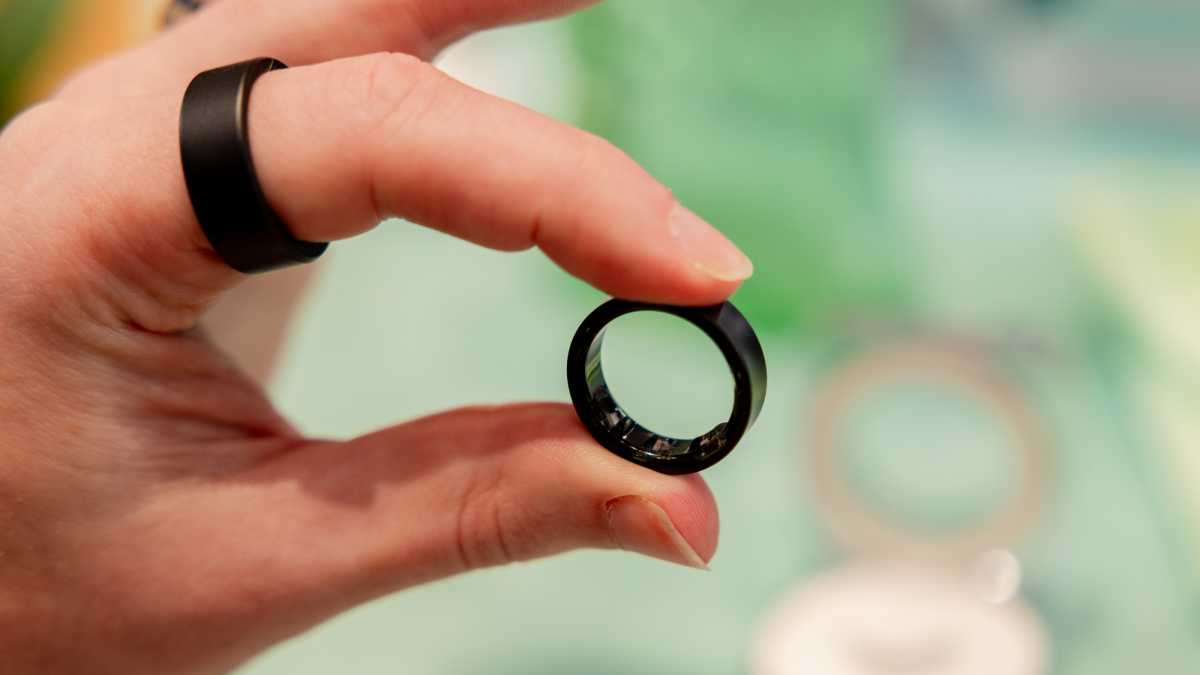
Dominik Tomaszewski / Foundry
The Galaxy Ring also provides information and graphics on your heart rate and blood oxygen, although data for the latter is only available during sleep. I’m generally healthy and relatively fit, so didn’t find this data in isolation of much use.
What I found to be completely inaccurate was the stress tracking. Almost every day of using the Galaxy Ring has apparently been a rollercoaster of stress, constantly yoyoing between relaxed and totally overwhelmed.
Many of the times the Galaxy Ring thought I was stressed, I was simply just more active like taking the dog for a walk or digesting a meal. I didn’t feel stressed during either, yet when I actually knew I was stressed, the ring thought the opposite.
Samsung does note in the app that it doesn’t necessarily reflect how you are feeling and things like alcohol and caffeine will affect measurements. Perhaps I drink too much tea and coffee for it to be useful, but I imagine it will be a similar case for a lot of people.
Fortunately, the app doesn’t send notifications telling me I’m stressed, but if I could, I think I’d switch this feature off to avoid the ironic stress of the readings being all over the place.
Almost every day of using the Galaxy Ring has apparently been a rollercoaster of stress, constantly yoyoing between relaxed and totally overwhelmed
Stress measurements are supposed to pause during activity, but I didn’t always find this to work and automatic tracking of things like the aforementioned dog walking only worked a handful of times.
Other sports and activities need manual activation, which I wish I’d known when I went for a rare swim.
As a man, I was unable to test the menstrual cycle tracking, but it’s there if that’s of interest.
All of the above is presented nicely in the Samsung Health app. It’s well laid out, colourful and intuitive, not overwhelming you with numbers, yet offering the option for more information and detailed breakdowns.
There are options to manually add things like water and food consumption and body composition. Beyond the Home screen, other tabs include Together and Fitness for competing with friends and Videos of things like Zumba classes.

Chris Martin / Foundry
As alluded to earlier, my main gripe is that there’s also the Galaxy Wear app, and the two link to each other far too much. For example, the Samsung Health app doesn’t show the Galaxy Ring battery level and tap things in the Galaxy Wear app such as Energy score just pings you back over to Health.
With Bluetooth 5.4, I’ve found connectivity with the Galaxy Ring very solid indeed. And this is critical when you’re relying on the mobile app for information and notifications.
The ring syncs very quickly with the Health app, and I like little touches Samsung has thought of, like being notified the Galaxy Ring has reached 100% in the charging case.
If you pair the ring with a compatible Galaxy smartphone, a double pinch gesture between the finger the ring is on, and your thumb can take a photo on the phone or dismiss an alarm.
Battery Life & Charging
- Week-long battery life
- Green/red light indicators
- Excellent charging case
As mentioned earlier, battery life will vary slightly depending on what size Galaxy Ring you buy. The battery size is as follows for the nine sizes:
- Sizes 5, 6, 7: 17mAh
- Sizes 8, 9, 10, 11: 18mAh
- Sizes 12, 13: 22.5mAh
This boils down to up to six days of usage on a single charge for sizes 5-11 and an additional day if you get 12 or 13.
I’ve been testing a size 12, which has the biggest battery, and found Samsung’s claim to be bang on. In fact, the Galaxy Ring last a little bit longer than a week, dying in the early hours of day eight.
The main thing I would note is that I’m not a gym bunny, so haven’t been doing any tracked workouts.
When it comes to charging, Samsung has nailed it with a really neat charging case. I’m not the biggest fan of the clear design, which has a dental vibe to me, but I’m getting more used to it over time.
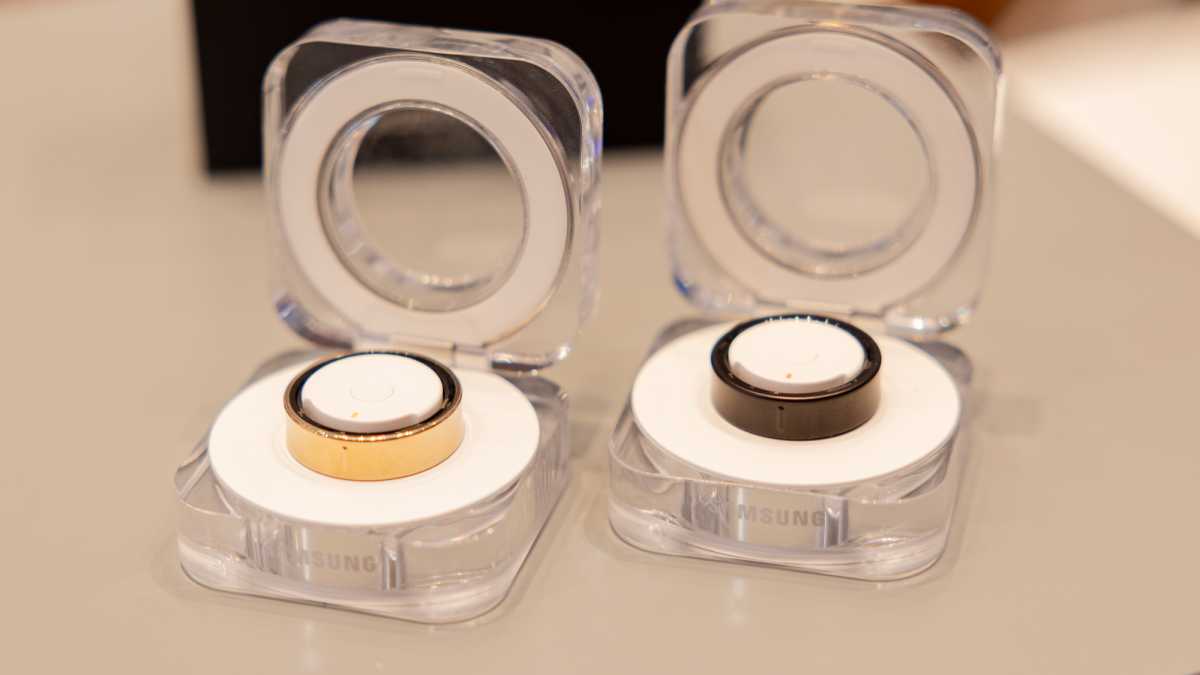
Dominik Tomaszewski / Foundry
It works just like a pair of wireless earbuds, where the case has a battery and tops up the ring whenever it’s inserted. An LED ring around the Galaxy Ring indicates the battery level when you open the case, or you can tap the button in the middle, which is also used to put it in pairing mode.
I found the ring charged from dead to 26% in 30 minutes. The case itself can be charged via USB-C or Qi wireless charging, which is great.
I also found the case useful when I wanted somewhere to safely store the ring when I was doing something which didn’t suit wearing it.
The Galaxy Ring last a little bit longer than a week, dying in the early hours of day eight
If you don’t have the case or your phone handy to check battery level, the Galaxy Ring has a neat feature where if you take it off and wait a few seconds (the length seems to vary) the sensors will flash green or red to indicate if you have above or below 10% battery.
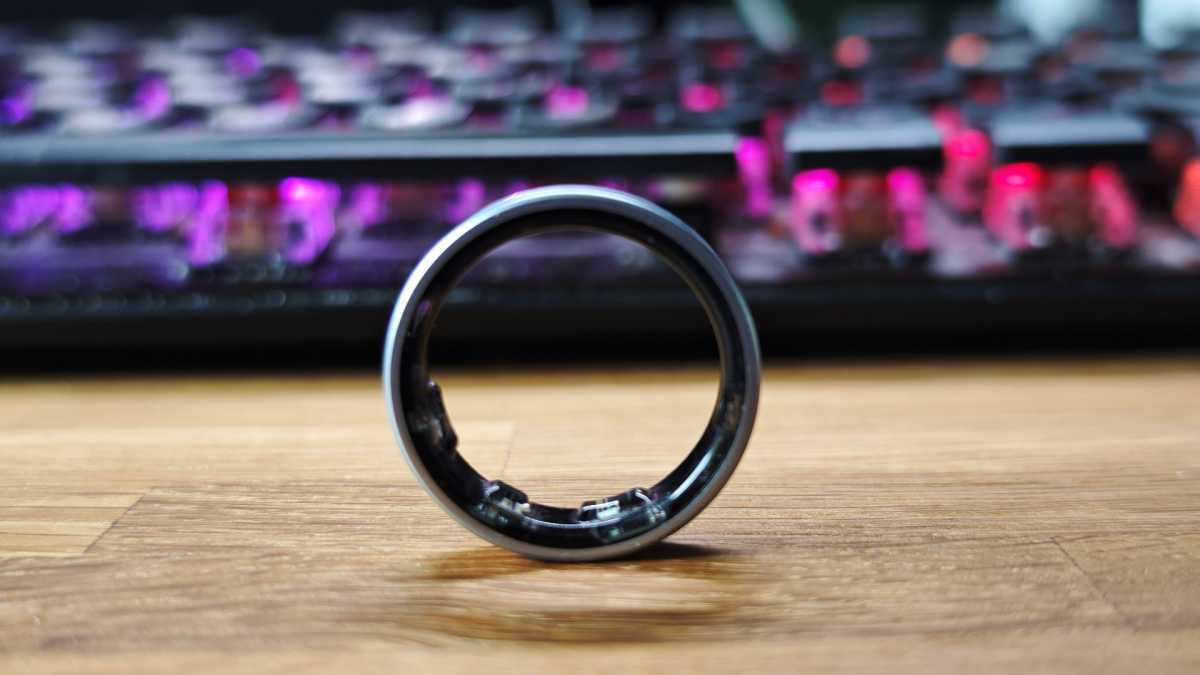
Chris Martin / Foundry
The final thing to say in this section is there is a way of extending the battery life by up to 30%. It sounds too good to be true but if you use the Galaxy Ring in conjunction with a Galaxy Watch, the tracking is shared between the two devices. With the ring not having to take readings like heart rate as often, the battery is conserved.
Price & Availability
The price of the Galaxy Ring is something of a dual-edged sword. On the one hand, it’s one of the most expensive smart rings on the market at £399/$399.99.
You can buy it from Samsung as well as John Lewis and Currys in the UK. In the US, find it at Samsung as well as Amazon and Best Buy.
It’s a lot, especially when you consider the Galaxy Watch 7 and Galaxy Watch FE start at £289/$299.99 and £199/$199 respectively.
It’s also more expensive than rivals, which I’ve listed below for convenience. However, Samsung doesn’t charge a monthly subscription fee to access any particular features or data, unlike Oura.
So, it will be cheaper in the long run if you use it for long enough. Bear in mind that Samsung could also offer a trade-in deal when a new generation arrives.

Dominik Tomaszewski / Foundry
Should you buy the Samsung Galaxy Ring?
The first question you need to ask yourself is whether you want a smart ring. They are very different to smartwatches and activity trackers due to the lack of screen, and tend to have fewer features.
They may provide longer or shorter battery life, depending on the watch you’re looking at, and may also be more expensive. If money is no object, you can wear it with a Galaxy Watch for an enhanced experience, though we were keen to review it as a standalone product.
Much of the decision will come down to subjective preferences as it’s essentially jewellery. If you’re set on a smart ring – alone or in addition to a watch – the Galaxy Ring is certainly one of the best.
It’s expensive, but Samsung offers a pretty smooth and well-rounded experience. I’ve found it comfortable and stylish, even though I would prefer it heavier and with a more metallic feel.
The tracking and features are also very good overall, provided you’re ok with the limitations of the form factor. It’s only really the stress tracking that I found to be pointless.
An impressive effort for a first-generation, Samsung has really taken it to rivals such as Oura. With mostly small niggles, the Galaxy Ring comes recommended – provided the price doesn’t put you off.
Specs
- Bluetooth 5.4
- Accelerometer
- Optical Heart Rate Sensor
- Temperature Sensor
- Charging case with USB-C and wireless charging
- Battery: 17-22.5mAh (depending on size)
- IP68
- 10ATM
- Sizes: 5-13 US
- Weight: 2.3-3g (depending on size)














